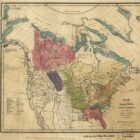Choctaw Indian Tribe in Alabama
Choctaw Indian Tribe in Alabama
A Muscogean based tribe, the Choctaw is similar to the Creek Confederation. The Choctaw evolved from multiple smaller tribes that shared similar language and culture.
The Choctaw (in the Choctaw language, Chahta) are a Native American people originally occupying what is now the Southeastern United States (modern-day Alabama, Florida, Mississippi and Louisiana). Their Choctaw language belongs to the Muskogean language family group.
The Choctaw were early allies of the French, Spanish and British during the 18th century. In the 1750’s the tribe was involved in a Civil War that decimated whole villages. The division was driven by factions affiliated with the Spanish and the other the French. In the 18th century the Choctaw were generally at war with the Creeks or the Chickasaw Indians. The Choctaw like all of the Muscogean tribes was a matriarchal and clan culture.
The MOWA Band of Choctaw Indians in Alabama and the Alabama Inter-Tribal Council, which is composed solely of non-federally recognized tribes under Chief Framon Weaver, obtained a US Supreme Court ruling that sovereign immunity applies not only to entities such as the Alabama Inter-Tribal Council as an arm of the tribe, but also that sovereign immunity is inherent and possessed of Indians because they are Indians. This decision of the U.S. Federal Court of Appeals was upheld by the United States Supreme Court in 2002.
Source: Wikipedia contributors, “Choctaw,” Wikipedia, The Free Encyclopedia
Choctaw History
After leaving the ruins of Mabila, De Soto and his followers, according to the Gentleman of Elvas (see Robertson, 1933), reached a province called Pafallaya, but, according to Ranjel, to a chief river called Apafalaya. Halbert is undoubtedly right in believing that in these words we have the old name of the Choctaw, Pansfalaya, “Long Hairs,” and this is the first appearance of the Choctaw tribe in history. We hear of them again, in Spanish Florida documents of the latter part of the seventeenth century, and from this time on they occupied the geographical position always associated with them until their removal beyond the Mississippi. The French of necessity had intimate dealings with them from the time when Louisiana was first colonized, and the relations between the two peoples were almost invariably friendly. At one time an English party was formed among the Choctaw, partly because the prices charged by the Carolina traders were lower than those placed upon French goods. This was led by a noted chief named Red Shoes and lasted for a considerable time, one of the principal Choctaw towns being burned before it came to an end with the defeat of the British Party in 1750. In 1763, after French Government had given way to that of the English east of the Mississippi, relations between the latter and the Choctaw were peaceful though many small bands of Indians of this tribe crossed the Mississippi into Louisiana. The American Revolution did not alter conditions essentially, and, though Tecumseh and his emissaries endeavored to enlist the Choctaw in his favor, only about 30 individuals joined the hostile Creeks. The abstinence of the tribe as a whole was due very largely to the personal influence of the native statesman, Pushmataha, whose remains lie in the Congressional Cemetery in Washington, surmounted by an impressive monument. Meanwhile bands of Choctaw continued moving across the Mississippi, but the great migration occurred after the Treaty of Dancing Rabbit, September 30, 1830, by which the tribe ceded their old lands. However, a considerable body of Choctaw did not leave at this time. Many followed, it is true, at the time of the allotment in Oklahoma, but upward of a thousand still remain, principally in the neighborhood of Philadelphia, Miss. The western Choctaw established a government on the model of those of the other civilized tribes and that of the United States, and it was not given up until merged in the State of Oklahoma early in the present century.
Choctaw Bands:
Mississippi Band of Choctaw Indians
The early Mississippi Choctaw Indians were in constant contact with non-Indian culture from the early 1600’s. When the Removal Act was passed by Congress in 1830, the Choctaw were offered a choice under the Treaty of Dancing Rabbit Creek, provided that any Choctaw who wished to remain in Mississippi to become a United States citizen might do so and would receive land from the State. There were about 20,000 Choctaw Indians in Mississippi and more than one-third chose to stay.
Texas Band of Choctaw Indians
The Treaty of Birds Fort , September 29,1843, and the purchase of land by Benjamin Franklin Thomson in 1844 helped to establish what is known today at Mount Tabor Indian Community. President James K. Polk allowed members of the Old Settler and Ridge Party Cherokee to leave Indian Territory for Texas.
MOWA Band of Choctaw Indians
Choctaw Clans:
Wind, Bear, Deer, Wolf, Panther, Holly Leaf, Bird, Raccoon and Crawfish
Additional Resources:
Handbook of American Indians North of Mexico, Frederick Webb Hodge
The Indian Tribes of North America, John Swanton
